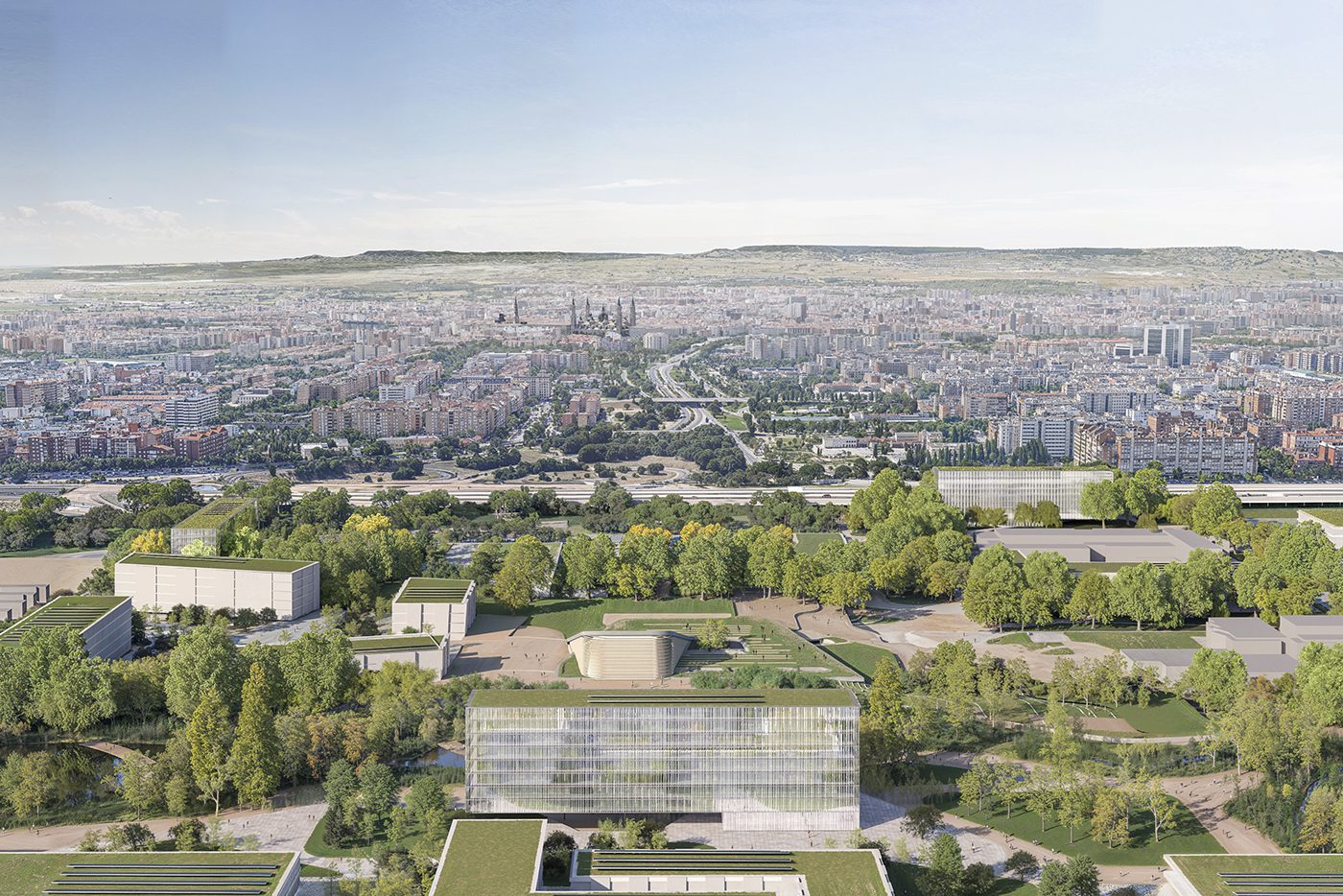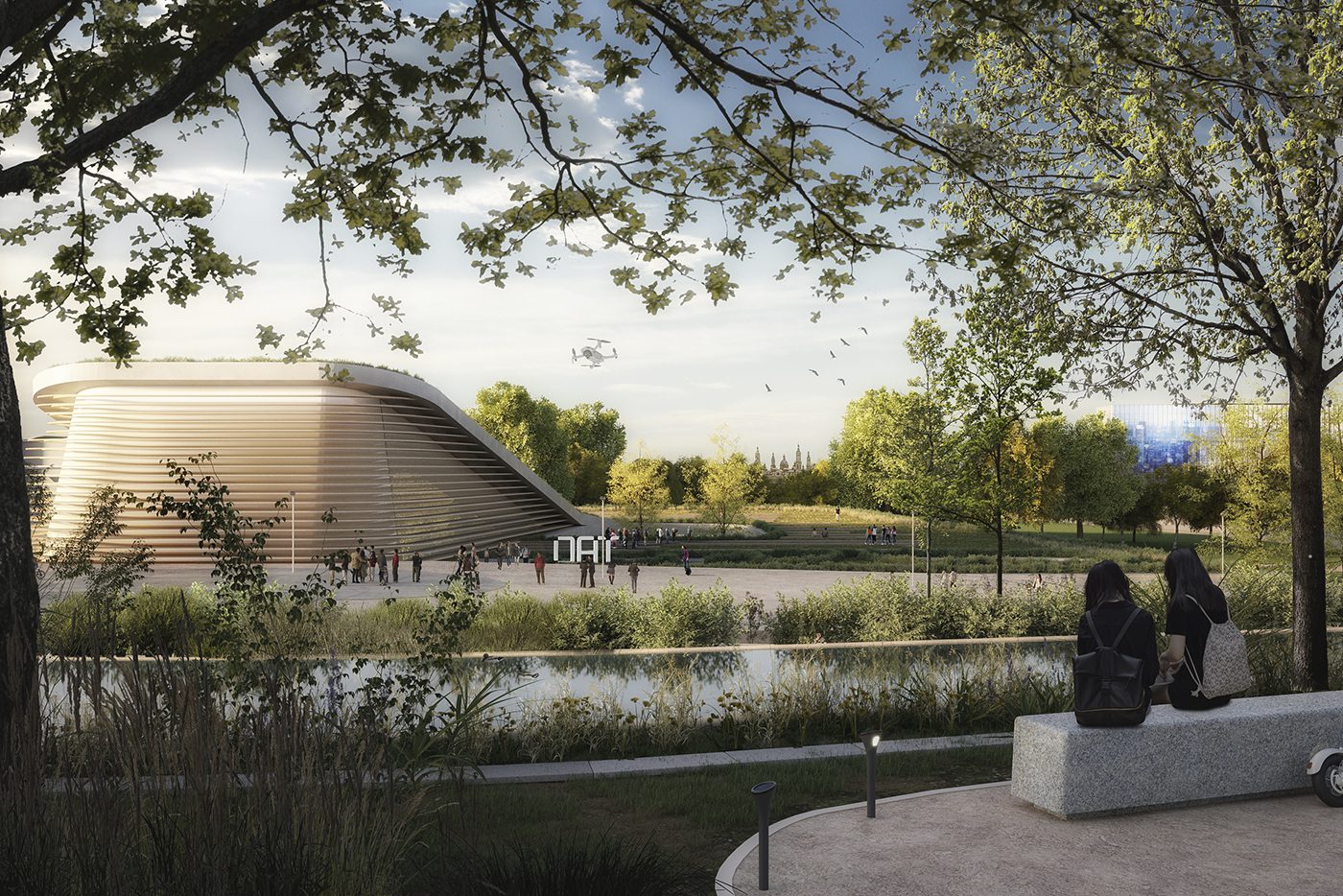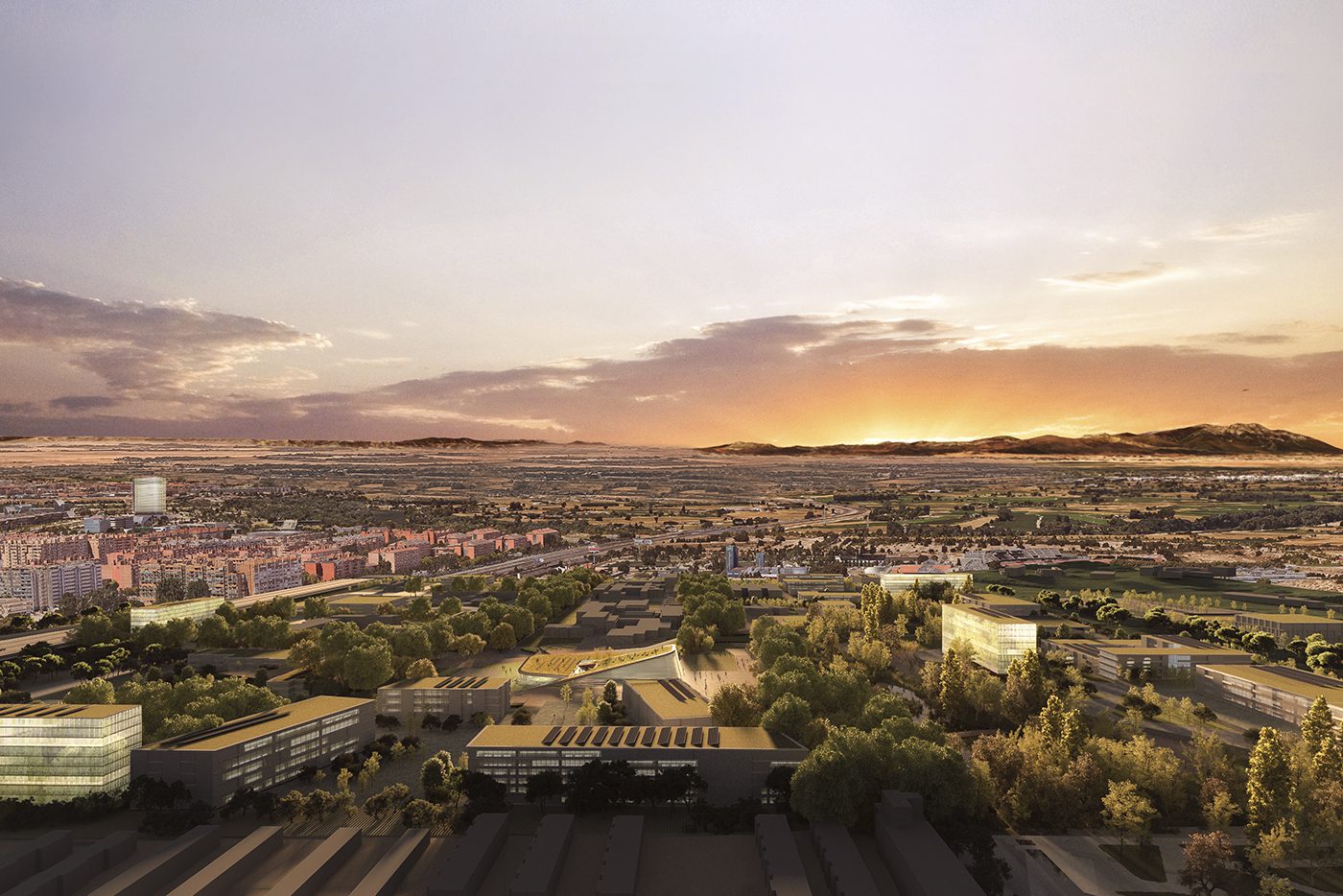Project implementation: Spain
Project development: Spain
DAT Alierta is poised to become Aragon's new technology district. Occupying an 80-hectare area on the northern edge of Zaragoza, it is conceived as a place where city and nature intersect. Zaragoza is a water-rich city, defined by the Ebro River, Spain's largest. The river's watershed traces a watercourse through the territory from east to west: the El Rabal or Juslibol irrigation canal. This water element acts as the catalyst for three main structural axes within the project.
First, the canal's perimeter defines a south-facing slope that benefits from ample sunlight in winter, while its naturalized riverine surroundings provide coolness in summer and reduce the area covered by hard surfaces. This configuration favors the emergence of a microclimate and intentionally incorporates biodiversity as a transformative agent in the new urban models referenced throughout the region.
Second, the canal's presence, preservation, and enhancement support the continuity of the watercourse and the restoration of the hydrological cycle, contributing to the renewal of riverside ecosystems both within and surrounding the site. This approach positions DAT Alierta as a contemporary evolution of the technology park typology, adopting an urban planning model that not only respects the local natural heritage but also seeks to achieve greater integration between built and ecological systems.
Finally, half of the designated area is already built and in use, while the other half constitutes, in Clément's terms, a form of 'third landscape,' shaped by previous urban planning that failed to consider the watercourse. Thus, the project advances with a proactive strategy of adaptive reuse, integrating the site's water heritage and transforming an obsolete and homogenizing urban scheme into a greener and more resilient city defined by blue and green infrastructure.




